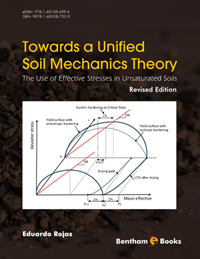Abstract
SHS investigation development is considered from the geographical and historical viewpoint. 3 stages are described. Within Stage 1 the work was carried out in the Department of the Institute of Chemical Physics in Chernogolovka where the scientific discovery had been made. At Stage 2 the interest to SHS arose in different cities and towns of the former USSR. Within Stage 3 SHS entered the international scene. Now SHS processes and products are being studied in more than 50 countries.
Abstract
In the previous chapter, a probabilistic porous-solid model with the ability to simulate both branches of the soil-water retention curve was developed. In this chapter, the model is used to interpret more realistically the results of mercury intrusion porosimetry tests. Moreover, it is used to obtain the pore size distribution of soils employing both branches of the soil-water retention curve as data. The numerical and experimental comparisons for different soils show that the model approximately reproduces the pore size distribution obtained from mercury intrusion porosimetry tests. Finally, a procedure to fit the numerical with the experimental soil-water retention curves in order to obtain the pore size distribution of soils is presented.
Keywords:
Contact angle, Critical radius, Grain size distribution, Hydromechanical coupling, Logarithmic normal distribution, Macropores, Mean size, Mercury intrusion porosimetry tests, Mesopores, Micropores, Pore size distribution, Relative volume, Scanning electron micrographs, Soil mixtures, Soilwater retention curve, Standard deviation, Superficial tension.
Recommended Chapters
We recommend

Authors:Bentham Science Books






